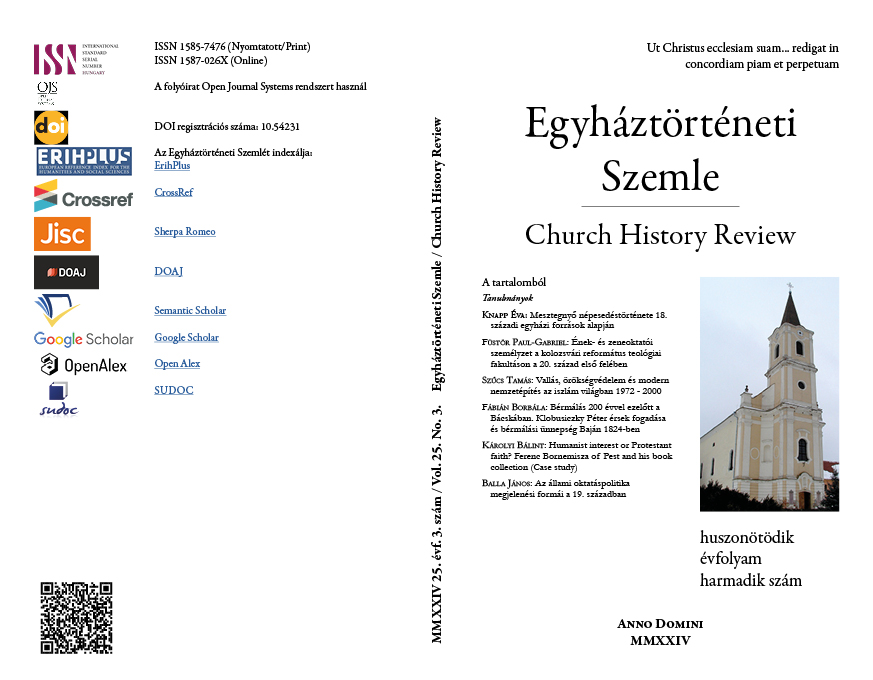Grundsätze der öffentlichen Bildungspolitik im 19. Jahrhundert
DOI:
https://doi.org/10.54231/ETSZEMLE.2024.3.6Schlagwörter:
Aufklärung, Philosophie, Bildungsgeschichte, Staat, Kirche, TrennungAbstract
Seit dem Ende des 17. Jahrhunderts setzten die Philosophen der Aufklärung die Trennung von Kirche und Staat in den europäischen Staaten in Gang. Von einer theoretischen, eindeutigen Trennung kann in keinem Land zu irgendeinem Zeitpunkt die Rede sein. Dies zeigt sich deutlich im Bereich der Bildung, wo fast alle untersuchten Staaten über eine religiöse Institution auf die eine oder andere Weise auf die Idee kamen, dass auch diese in die Bildung ihrer Bürger einbezogen werden sollte.
Das gemeinsame Merkmal der sich entwickelnden modernen europäischen öffentlichen Bildungssysteme ist, dass fast keines von ihnen bis zum Ende des 19. Jahrhunderts - manchmal bis zum Beginn des 20. In dem sich daraus ergebenden, im Wesentlichen dualen Schulsystem legen die verschiedenen Einrichtungstypen unterschiedliche Bildungsziele fest und verwenden spezifische Lehrmethoden, um diese zu erreichen. Auch die Aufsichts- und Verwaltungssysteme der beiden Systeme sind unterschiedlich. Die Volksschule, die für alle Bürger obligatorisch ist, konzentriert sich auf die Vermittlung von Grundkenntnissen (Lesen, Schreiben, Rechnen) und den "Erwerb" eines Gefühls der nationalen Identität.
Downloads
Downloads
Veröffentlicht
Konferenzband
Rubrik
Kategorien
Lizenz
Copyright (c) 2024 Balla János (Szerző)

Dieses Werk steht unter der Lizenz Creative Commons Namensnennung 4.0 International.
Der/die Autor(en) behalten sich das Urheberrecht an ihrem Werk vor.
Die Church History Review schränkt die Rechte der Autoren nicht ein, ihre Manuskripte oder Manuskriptversionen auf Preprint-Servern oder anderen Hostings zu veröffentlichen. Dies gilt generell für die folgenden Formate.
- Eingereichte Version
- Angenommene Version (Manuskript vom Autor angenommen)
- Veröffentlichte Version (Version of Record)









